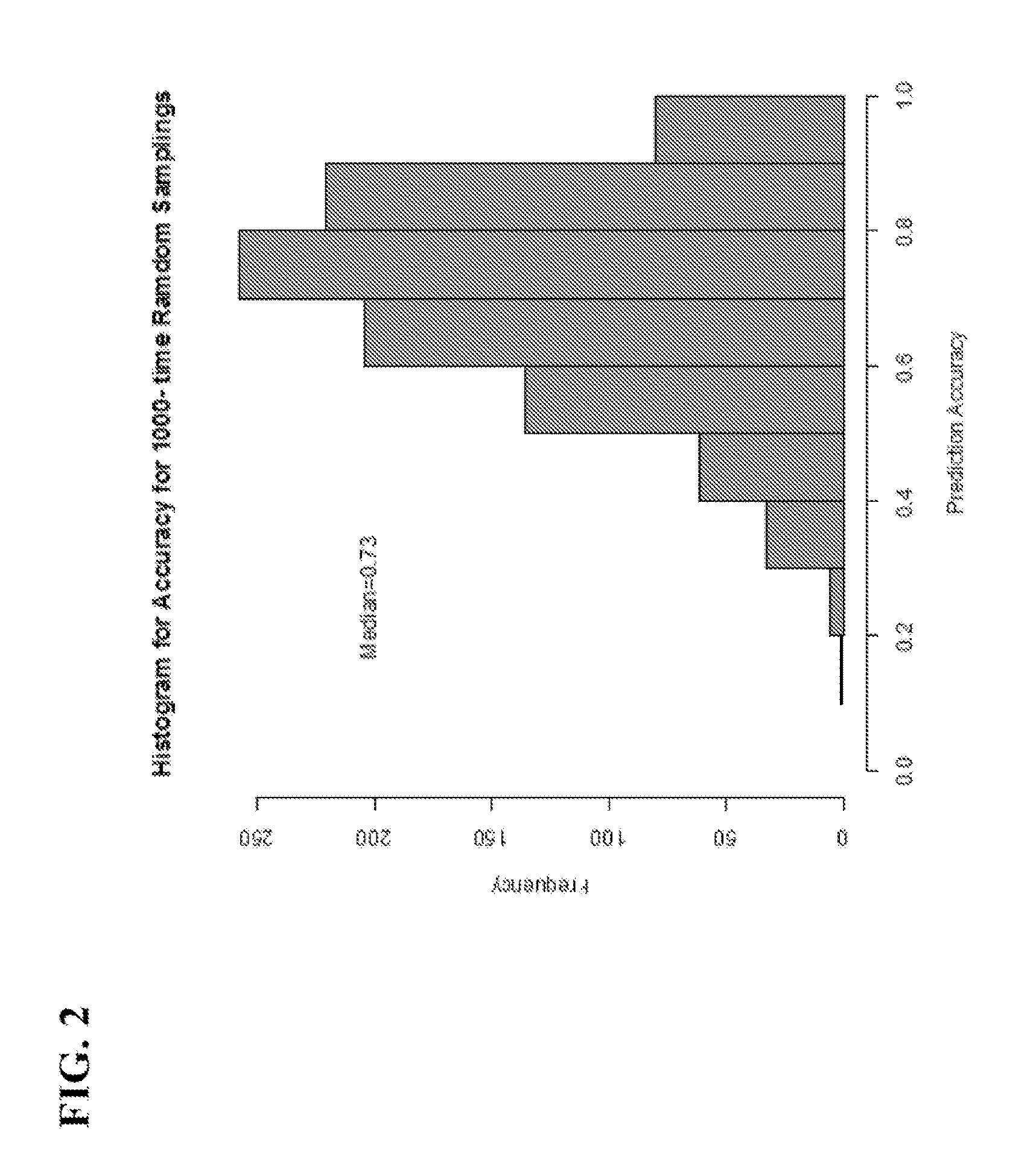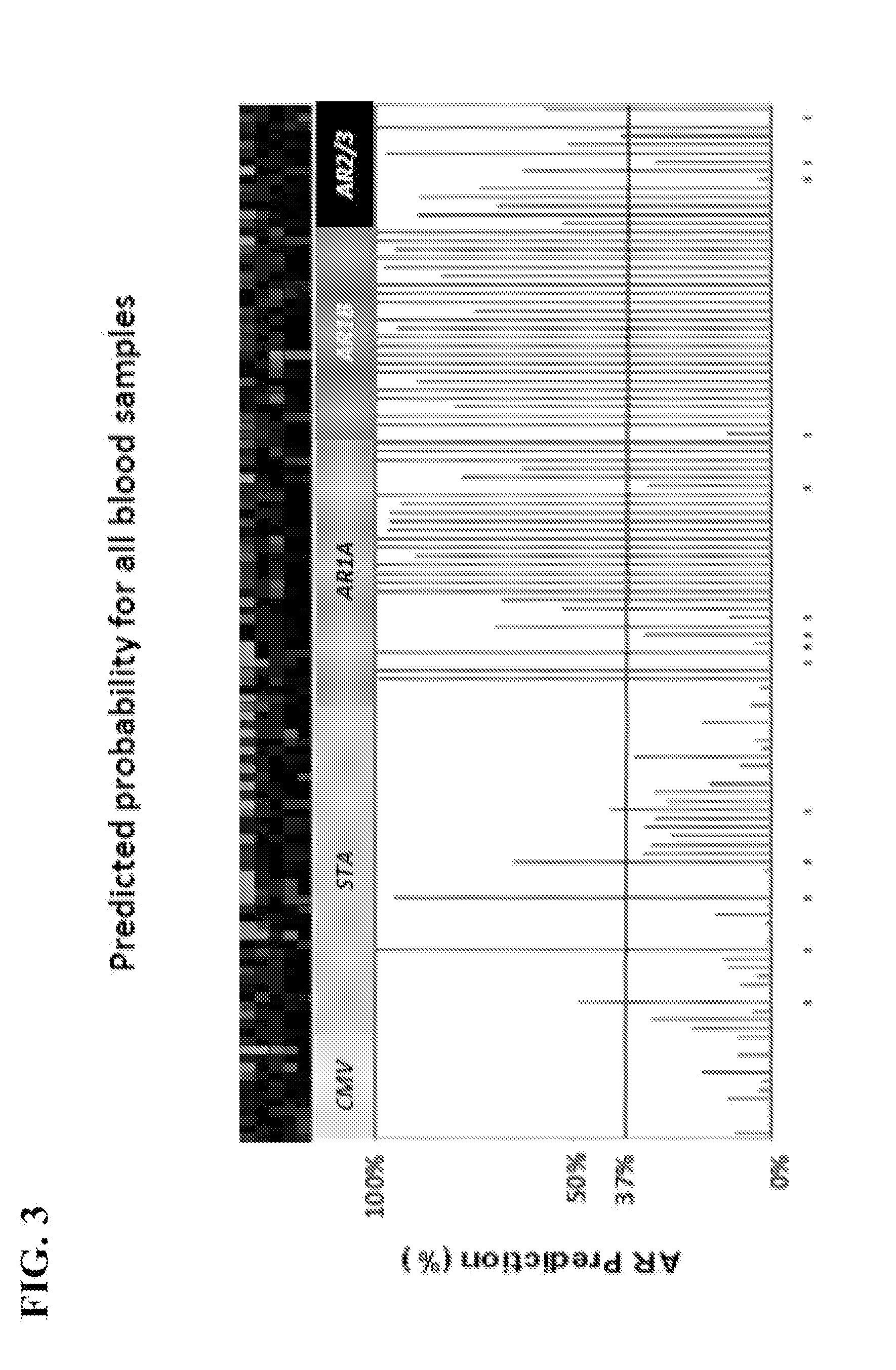Compositions and methods for diagnosis and prediction of solid organ graft rejection
a solid organ and graft technology, applied in the field of solid organ graft rejection diagnosis and prediction, can solve the problems of graft rejection still a common risk in organ transplant recipients, mortality, development, and failure to be unequivocally established
- Summary
- Abstract
- Description
- Claims
- Application Information
AI Technical Summary
Benefits of technology
Problems solved by technology
Method used
Image
Examples
example 1
Diagnosis and Prediction of Acute Rejection of Heart Transplant
[0120]To determine if the same gene panel that was recently discovered as pertinent for diagnosis of renal transplant rejection could also detect and predict transplant rejection across different solid organs, the 10-gene panel was validated by Q-PCR in 141 blood samples from 45 heart transplant recipients with stable graft function (STA, n=41), acute rejection (AR, n=66), cytomegalovirus infection (CMV, n=12) and samples drawn within 6 months of AR (n=23). A QPCR logistic regression model was built on 32 samples and tested for AR prediction in an independent set of 109 samples. Cardiac allograft vasculopathy (CAV) was scored at serial times up to 4 years post-transplant.
[0121]Methods
Study Population
[0122]This study utilized a cohort of 45 consecutive patients undergoing first heart transplantation between January 2002 and May 2005. The clinical profile of the 45 study patients is summarized in Table 2. This cohort was a...
example 2
Diagnosis and Prediction of Acute Rejection of Lung Transplant
[0151]Similar to the study described in Example 1, correlation studies of gene expression profiles in 10 peripheral blood samples of lung transplant patients with biopsy-proven acute rejection as compared to 10 peripheral blood samples of lung transplant patients without acute rejection results in the identification of all 10 genes (i.e., CFLAR, DUSP1, IFNGR1, ITGAX, NAMPT, PSEN1, RNF130, RYBP, MAPK9, and NKTR). Differential expression analysis is further conducted in bronchoalveolar lavage (BAL) samples and further confirms the differential gene expression for the 10 genes.
example 3
Diagnosis and Prediction of Acute Rejection of Liver Transplant
[0152]A similar study as described in Example 1 is done with subjects who have received a liver transplant. Correlation studies of gene expression profiles in 15 peripheral blood samples of liver transplant patients with biopsy-proven acute rejection as compared to 45 peripheral blood samples of liver transplant patients without acute rejection results in the identification of all 10 genes (i.e., CFLAR, DUSP1, IFNGR1, ITGAX, NAMPT, PSEN1, RNF130, RYBP, MAPK9, and NKTR).
PUM
| Property | Measurement | Unit |
|---|---|---|
| Fraction | aaaaa | aaaaa |
| Time | aaaaa | aaaaa |
| Current | aaaaa | aaaaa |
Abstract
Description
Claims
Application Information
 Login to View More
Login to View More - R&D
- Intellectual Property
- Life Sciences
- Materials
- Tech Scout
- Unparalleled Data Quality
- Higher Quality Content
- 60% Fewer Hallucinations
Browse by: Latest US Patents, China's latest patents, Technical Efficacy Thesaurus, Application Domain, Technology Topic, Popular Technical Reports.
© 2025 PatSnap. All rights reserved.Legal|Privacy policy|Modern Slavery Act Transparency Statement|Sitemap|About US| Contact US: help@patsnap.com



